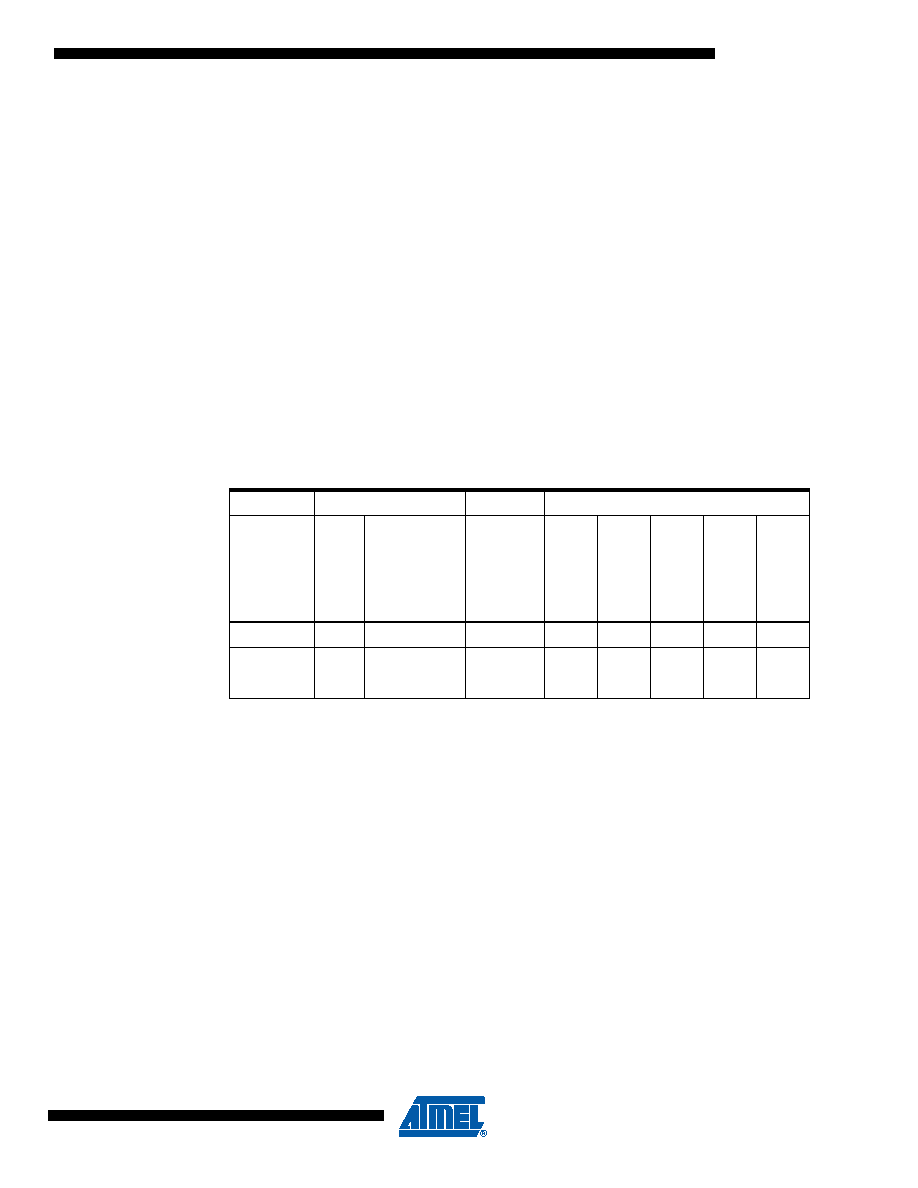- 您現(xiàn)在的位置:買賣IC網(wǎng) > PDF目錄45382 > MT80C51T-30R (TEMIC SEMICONDUCTORS) 8-BIT, MROM, 30 MHz, MICROCONTROLLER, PQFP44 PDF資料下載
參數(shù)資料
| 型號: | MT80C51T-30R |
| 廠商: | TEMIC SEMICONDUCTORS |
| 元件分類: | 微控制器/微處理器 |
| 英文描述: | 8-BIT, MROM, 30 MHz, MICROCONTROLLER, PQFP44 |
| 文件頁數(shù): | 152/226頁 |
| 文件大小: | 3676K |
| 代理商: | MT80C51T-30R |
第1頁第2頁第3頁第4頁第5頁第6頁第7頁第8頁第9頁第10頁第11頁第12頁第13頁第14頁第15頁第16頁第17頁第18頁第19頁第20頁第21頁第22頁第23頁第24頁第25頁第26頁第27頁第28頁第29頁第30頁第31頁第32頁第33頁第34頁第35頁第36頁第37頁第38頁第39頁第40頁第41頁第42頁第43頁第44頁第45頁第46頁第47頁第48頁第49頁第50頁第51頁第52頁第53頁第54頁第55頁第56頁第57頁第58頁第59頁第60頁第61頁第62頁第63頁第64頁第65頁第66頁第67頁第68頁第69頁第70頁第71頁第72頁第73頁第74頁第75頁第76頁第77頁第78頁第79頁第80頁第81頁第82頁第83頁第84頁第85頁第86頁第87頁第88頁第89頁第90頁第91頁第92頁第93頁第94頁第95頁第96頁第97頁第98頁第99頁第100頁第101頁第102頁第103頁第104頁第105頁第106頁第107頁第108頁第109頁第110頁第111頁第112頁第113頁第114頁第115頁第116頁第117頁第118頁第119頁第120頁第121頁第122頁第123頁第124頁第125頁第126頁第127頁第128頁第129頁第130頁第131頁第132頁第133頁第134頁第135頁第136頁第137頁第138頁第139頁第140頁第141頁第142頁第143頁第144頁第145頁第146頁第147頁第148頁第149頁第150頁第151頁當(dāng)前第152頁第153頁第154頁第155頁第156頁第157頁第158頁第159頁第160頁第161頁第162頁第163頁第164頁第165頁第166頁第167頁第168頁第169頁第170頁第171頁第172頁第173頁第174頁第175頁第176頁第177頁第178頁第179頁第180頁第181頁第182頁第183頁第184頁第185頁第186頁第187頁第188頁第189頁第190頁第191頁第192頁第193頁第194頁第195頁第196頁第197頁第198頁第199頁第200頁第201頁第202頁第203頁第204頁第205頁第206頁第207頁第208頁第209頁第210頁第211頁第212頁第213頁第214頁第215頁第216頁第217頁第218頁第219頁第220頁第221頁第222頁第223頁第224頁第225頁第226頁

31
2543L–AVR–08/10
ATtiny2313
Power-down Mode When the SM1..0 bits are written to 01 or 11, the SLEEP instruction makes the MCU enter
Power-down mode. In this mode, the external Oscillator is stopped, while the external interrupts,
the USI start condition detection, and the Watchdog continue operating (if enabled). Only an
External Reset, a Watchdog Reset, a Brown-out Reset, USI start condition interrupt, an external
level interrupt on INT0, or a pin change interrupt can wake up the MCU. This sleep mode basi-
cally halts all generated clocks, allowing operation of asynchronous modules only.
Note that if a level triggered interrupt is used for wake-up from Power-down mode, the changed
level must be held for some time to wake up the MCU. Refer to “External Interrupts” on page 59
for details.
When waking up from Power-down mode, there is a delay from the wake-up condition occurs
until the wake-up becomes effective. This allows the clock to restart and become stable after
having been stopped. The wake-up period is defined by the same CKSEL Fuses that define the
Reset Time-out period, as described in “Clock Sources” on page 23.
Standby Mode
When the SM1..0 bits are 10 and an external crystal/resonator clock option is selected, the
SLEEP instruction makes the MCU enter Standby mode. This mode is identical to Power-down
with the exception that the Oscillator is kept running. From Standby mode, the device wakes up
in six clock cycles.
Notes: 1. Only recommended with external crystal or resonator selected as clock source.
2. For INT0, only level interrupt.
Minimizing Power
Consumption
There are several issues to consider when trying to minimize the power consumption in an AVR
controlled system. In general, sleep modes should be used as much as possible, and the sleep
mode should be selected so that as few as possible of the device’s functions are operating. All
functions not needed should be disabled. In particular, the following modules may need special
consideration when trying to achieve the lowest possible power consumption.
Analog Comparator
When entering Idle mode, the Analog Comparator should be disabled if not used. In other sleep
modes, the Analog Comparator is automatically disabled. However, if the Analog Comparator is
set up to use the Internal Voltage Reference as input, the Analog Comparator should be dis-
abled in all sleep modes. Otherwise, the Internal Voltage Reference will be enabled,
independent of sleep mode. Refer to “Analog Comparator” on page 149 for details on how to
configure the Analog Comparator.
Brown-out Detector
If the Brown-out Detector is not needed by the application, this module should be turned off. If
the Brown-out Detector is enabled by the BODLEVEL Fuses, it will be enabled in all sleep
modes, and hence, always consume power. In the deeper sleep modes, this will contribute sig-
Table 14. Active Clock Domains and Wake-up Sources in the Different Sleep Modes.
Active Clock Domains Oscillators
Wake-up Sources
Sleep Mode
clk
CP
U
clk
FLA
SH
clk
IO
En
ab
le
d
IN
T0,
INT1
and
Pi
n
Ch
an
ge
USI
S
tar
t
Condition
S
P
M/EEPROM
Read
y
Oth
er
I/
O
WDT
Idle
X
XXXX
X
Power-down
X(2)
XX
Standby(1)
XX(2)
XX
相關(guān)PDF資料 |
PDF描述 |
|---|---|
| MD80C32E-12P883D | 8-BIT, 12 MHz, MICROCONTROLLER, CDIP40 |
| MD80C32E-12SBD | 8-BIT, 12 MHz, MICROCONTROLLER, CDIP40 |
| MC80C32-12P883 | 8-BIT, 12 MHz, MICROCONTROLLER, CDIP40 |
| MD80C52TXXX-12SC | 8-BIT, MROM, 12 MHz, MICROCONTROLLER, CDIP40 |
| MQ80C32-12SBD | 8-BIT, 12 MHz, MICROCONTROLLER, CQFP44 |
相關(guān)代理商/技術(shù)參數(shù) |
參數(shù)描述 |
|---|---|
| MT80GB | 制造商:Datak Corporation 功能描述: |
| MT80JSF1G72NDY-1G1F1A2 | 制造商:Micron Technology Inc 功能描述:8GB 1GX72 DDR3 SDRAM MODULE PBF DIMM 1.5V REGISTERED - Trays |
| MT80KSF1G72NDY-1G4F1A3 | 制造商:Micron Technology Inc 功能描述:8GB 1GX72 DDR3 SDRAM MODULE PBF DIMM 1.35V FULLY BUFFERED - Trays |
| MT810 | 制造商:MARKTECH 制造商全稱:Marktech Corporate 功能描述:STANDARD T-1 3/4 LED LAMPS |
| MT-8100 | 制造商:Eclipse Tools 功能描述: |
發(fā)布緊急采購,3分鐘左右您將得到回復(fù)。